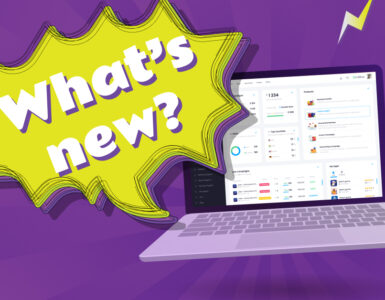In recent years, seasonal marketing has become a critical factor in the success of shopping apps. Understanding the importance of leveraging consumer behavior across seasons and situations is essential to remaining competitive in the marketplace. In this seasonal marketing article, we explore the power of awareness campaigns and how they can take your shopping app to new heights of success.
During certain dates, users make more in-app purchases, according to NRF.com. The most active day is Black Friday. In 2023, 72% (130.7 million people) made purchases, up from 69% in 2022.
Cyber Monday is the second most popular day, attracting 39% (71.1 million) of those planning to shop. shop on weekends, up from 38% last year.
Exploring Ways to Boost User Acquisition Through App Seasonality Trends
One effective strategy involves meticulous planning of holiday-themed content well in advance. This chapter delves into the importance of preparing festive materials ahead of time and how it can significantly contribute to increasing user acquisition.
The rationale behind this approach lies in the anticipation of user behavior during specific seasons or holidays. By aligning your app’s content with these occasions, you tap into the heightened user interest and engagement that naturally accompanies festive periods.
Benefits of Planning Holiday Content in Advance:
- Increased Visibility: Launching holiday-themed content ahead of time allows your app to stand out in the crowded market, capturing the attention of users actively seeking relevant seasonal experiences.
- Enhanced Engagement: Anticipating user needs and preferences during specific seasons enables you to tailor your content for maximum relevance, leading to increased user interaction and prolonged app engagement.
- Optimized Marketing Campaigns: Advanced planning allows for the development of targeted marketing campaigns aligned with the holiday theme, ensuring more effective outreach to potential users.
Key Strategies for Content Planning:
- Research Seasonal Trends: Stay informed about upcoming holidays and cultural events to align your app’s content with the prevailing seasonal interests.
- Early Content Development: Initiate the creation of holiday-themed content well in advance to allow for thorough testing, refinement, and seamless integration into your app.
- Prominent App Store Presence: Optimize your app store presence by highlighting the seasonal content, increasing its visibility to users browsing for relevant apps during festive periods.
By proactively planning and implementing holiday content, your app not only becomes a part of the seasonal festivities but also establishes itself as a go-to platform for users seeking a curated and timely experience. This strategic approach to content planning is a valuable tool for app developers aiming to enhance user acquisition in a competitive and dynamic market.
What Apps Can Be Considered Seasonal?
Most mobile apps remain in demand throughout the year. Examples include:
- Games: With a solid advertising strategy, games can attract downloads year-round.
- Banking Apps: Financial transactions are performed by users regardless of the season.
- Photo and Video Editors: Users’ desire to edit and share photos or videos on social media persists.
However, the situation is different for thematic apps tied to holidays, events, or specific seasons. Seasonal promotion can be effectively utilized for applications such as:
- New Year’s Greetings, Toasts, and Cards:
- Why they are relevant: As the holiday season approaches, apps offering New Year’s greetings and toasts become indispensable for creating a festive atmosphere. Users seek original ways to congratulate their loved ones, making such apps highly sought after.
- Sports Informers During Major Championships and Competitions:
- Advantages of usage: During significant sports events, apps providing extensive information and statistics capture the attention of sports enthusiasts. Seasonal championships and competitions create unique opportunities for positioning such apps.
- Thematic Wallpapers and Mobile Device Themes:
- Key points: Users aim to personalize their devices according to the current season or holiday. Thematic wallpapers and themes become popular during holiday periods, creating demand for such applications.
- Assistants in Tax Calculations and Filing Declarations:
- Benefits at specific times: During the tax season, apps offering convenient tools for tax calculations and filing declarations become essential. They provide users with the necessary support and assistance during this responsible period.
- Tourist Navigators for Extended Hiking Trips:
- Optimal usage: During the summer season, when people often embark on extended hiking trips and tourist journeys, tourist navigators become highly sought after. These apps can offer users optimal routes, tips, and information about tourist attractions.
- Optimal usage: During the summer season, when people often embark on extended hiking trips and tourist journeys, tourist navigators become highly sought after. These apps can offer users optimal routes, tips, and information about tourist attractions.
Pros and Cons of Using Seasonality in Mobile Applications
As the world of mobile applications continues to evolve, leveraging seasonality has emerged as a powerful strategy for developers. However, like any approach, there are both advantages and disadvantages associated with incorporating seasonality into global mobile applications.
Pros:
- Increased User Engagement: Seasonal content and promotions often resonate with users on a personal level, leading to heightened engagement. Users are more likely to interact with an app that aligns with their current interests and activities related to the season.
- Opportunities for Creativity: Seasonal themes provide developers with the chance to showcase creativity and innovation. From festive designs to themed features, developers can captivate their audience with fresh and captivating content during specific times of the year.
- Enhanced User Loyalty: By consistently offering relevant seasonal content, apps can foster a sense of loyalty among users. Users are more likely to return to an app that caters to their needs and preferences during different seasons, establishing a long-term relationship.
- Strategic Marketing Opportunities: Seasonal events and holidays present strategic marketing opportunities. Apps can leverage the increased search interest during these periods to optimize marketing campaigns, improve visibility, and attract new users.
Cons:
- Resource Intensity: Developing and implementing season-specific content can be resource-intensive. From designing new features to creating themed marketing materials, the process may require additional time and effort from the development team.
- Limited Relevance Across Regions: Seasonal themes might not be universally relevant. Holidays and cultural events vary across regions, making it challenging for apps to resonate with users globally during specific seasons.
- Risk of Oversaturation: Overusing seasonal content can lead to oversaturation, diminishing its impact over time. Users may become accustomed to seasonal promotions, reducing the novelty and excitement associated with such initiatives.
- Dependency on Timely Execution: Success in seasonal marketing relies on timely execution. Missing the window for a specific season or event can result in a loss of opportunities and a decreased impact on user engagement.
5 Top Tips to Help Increase App Profitability (Using Seasonal Marketing)
Now that we’ve explored the pros and cons of incorporating seasonality into global mobile applications, let’s delve into five top tips to maximize app profitability through effective seasonal marketing strategies.
- Early Planning and Preparation:
- Start planning seasonal campaigns well in advance to ensure seamless execution. This allows for thorough testing, refinement, and the creation of high-quality, engaging content tailored to the upcoming season or event.
- Personalization and User Segmentation:
- Leverage user data to personalize seasonal campaigns. Understand user preferences and behaviors during different seasons, enabling targeted and relevant content delivery. Segmenting your audience allows for more precise and effective marketing strategies.
- Utilize Push Notifications Strategically:
- Implement strategic push notifications to keep users informed about seasonal promotions, discounts, or special features. Timely and targeted notifications can significantly boost user engagement and conversion rates.
- Optimize App Store/Google Play Presence for Seasonal Keywords:
- Tailor your app store presence to align with seasonal keywords and trends. Optimize your app’s metadata, descriptions, and visuals to capture the attention of users searching for seasonal content during specific periods.
- Engage Users through Interactive Content:
- Create interactive and immersive seasonal content to enhance user engagement. Whether it’s a holiday-themed game, a quiz, or a virtual experience, interactive content encourages users to spend more time within the app, fostering a deeper connection.
By carefully considering the advantages and disadvantages of seasonality and implementing these top tips, developers can elevate their mobile applications, enhance profitability, and create a more engaging and relevant user experience.






















